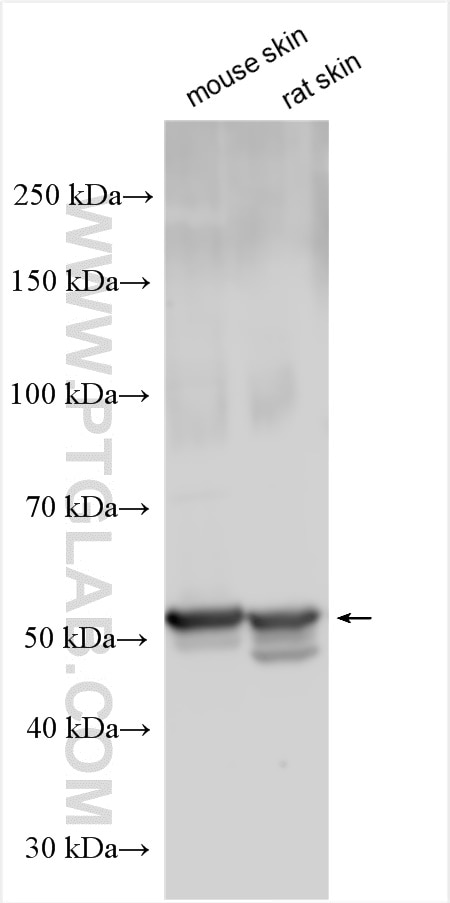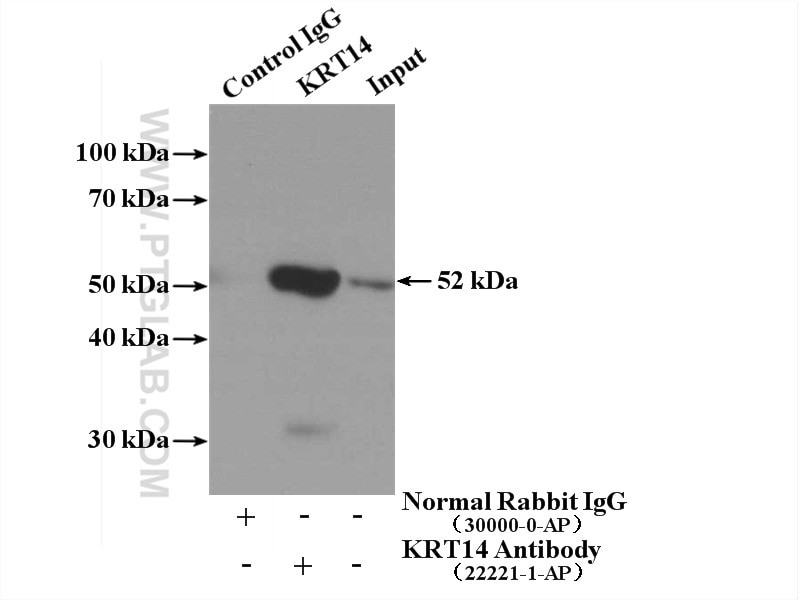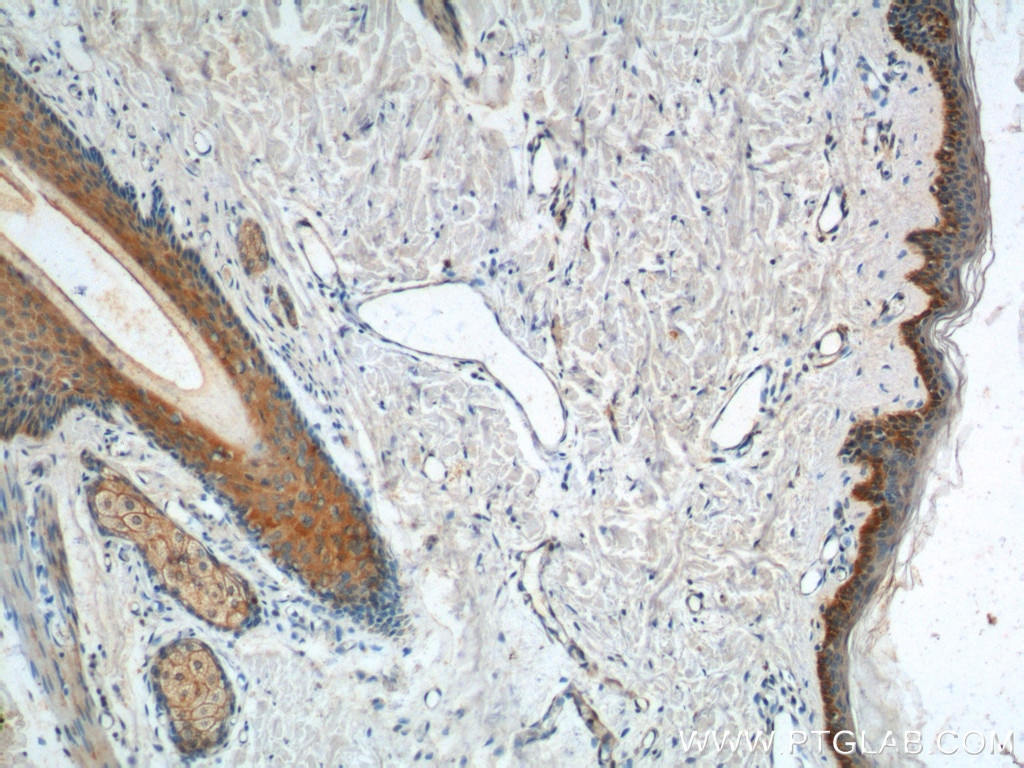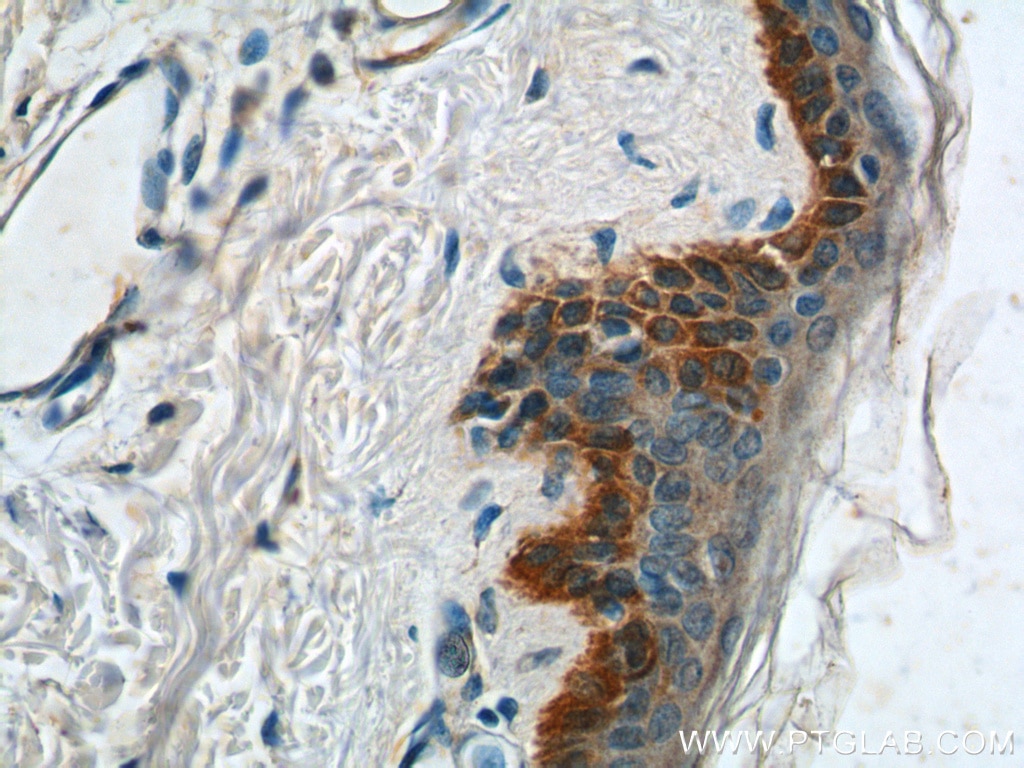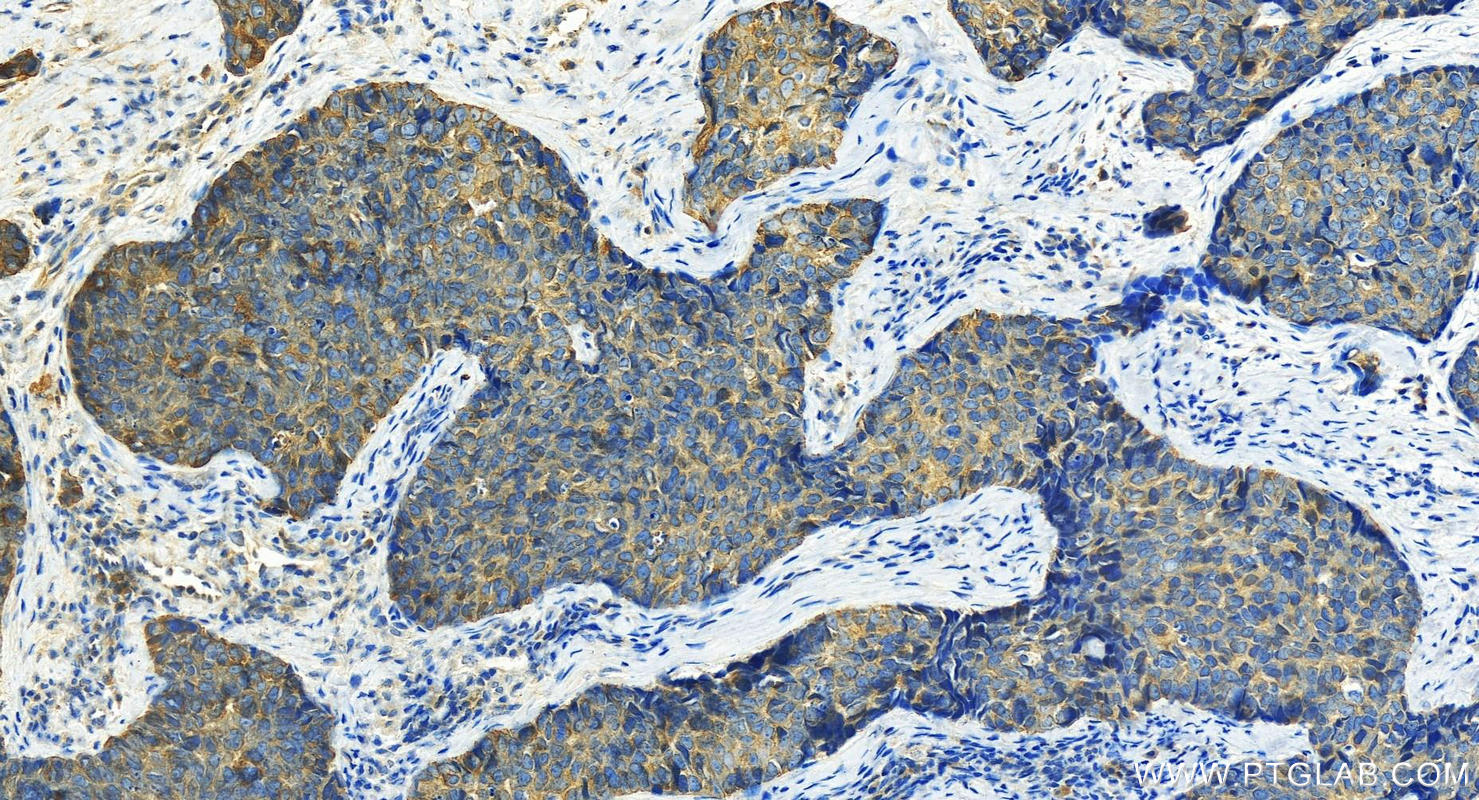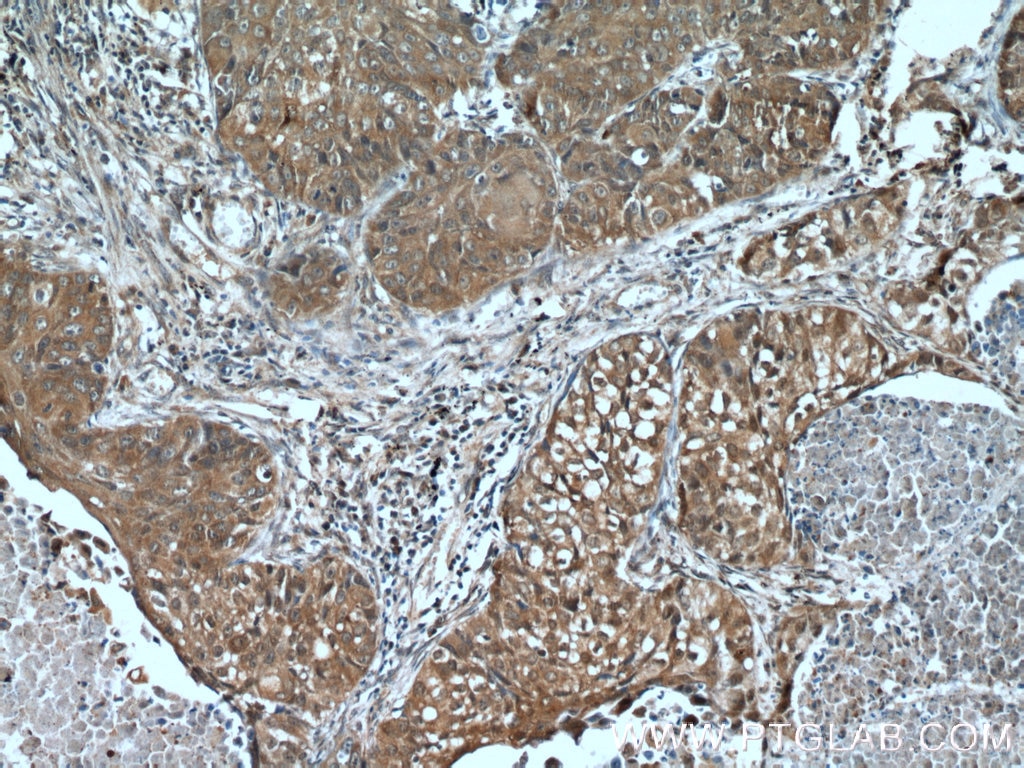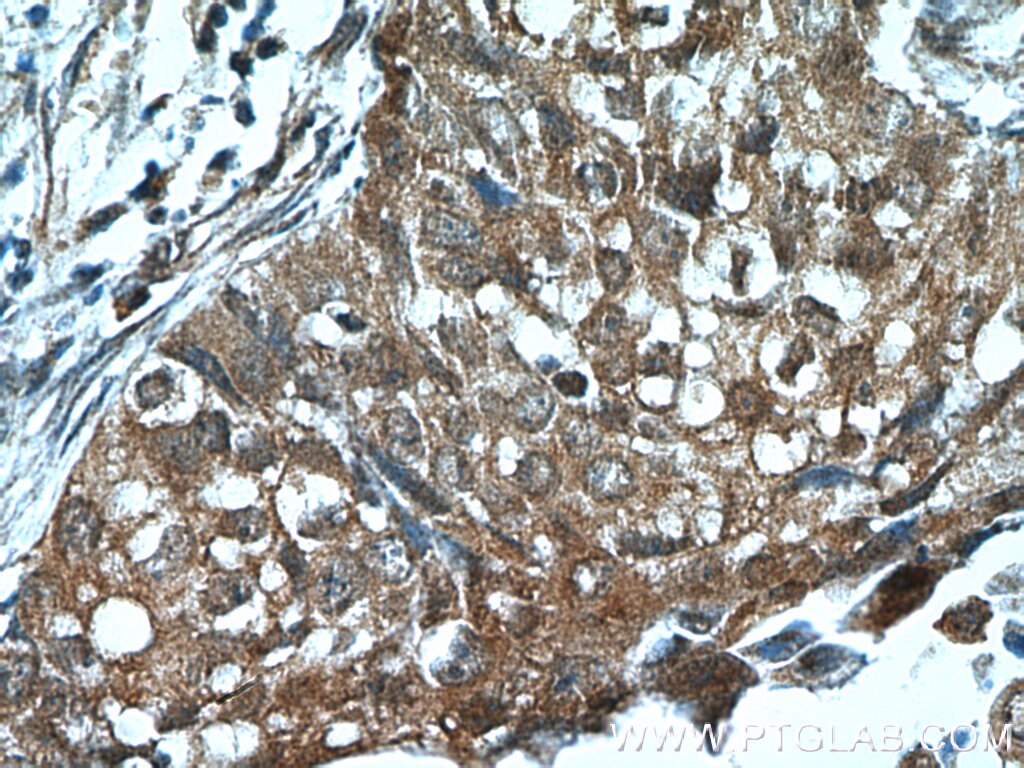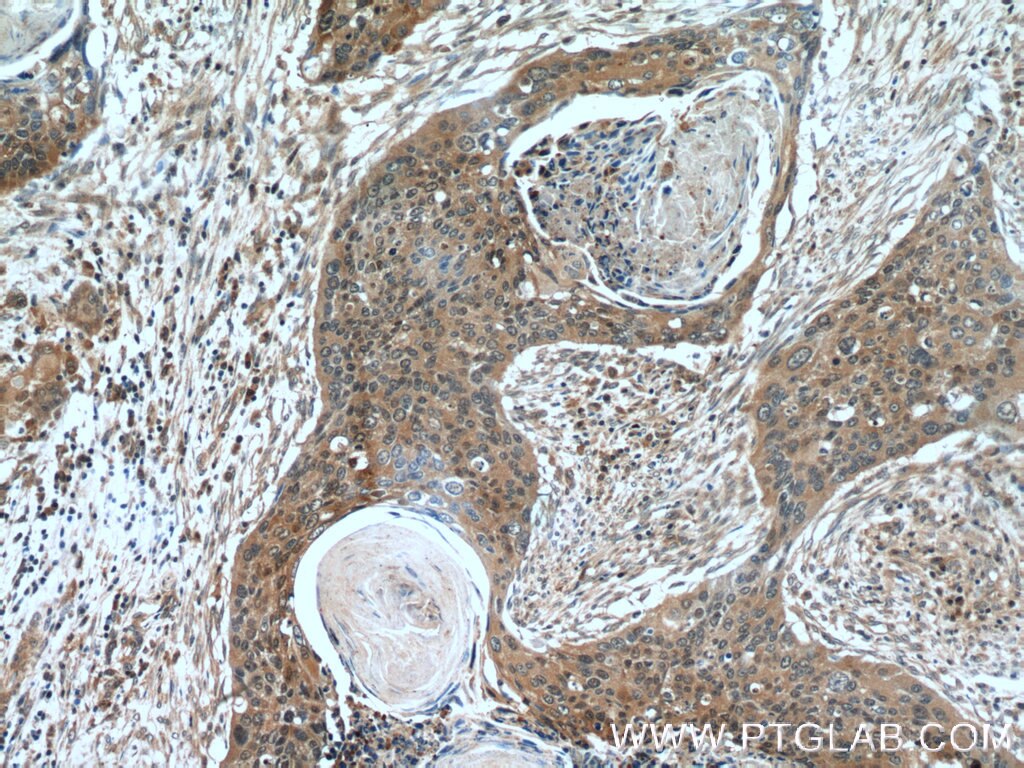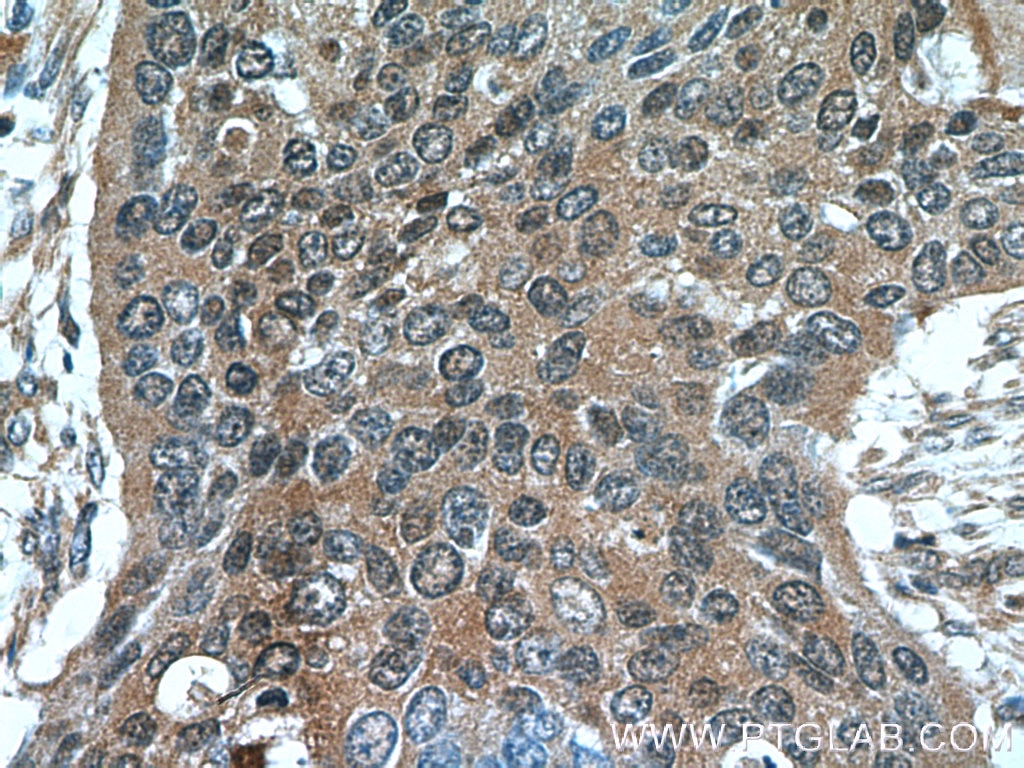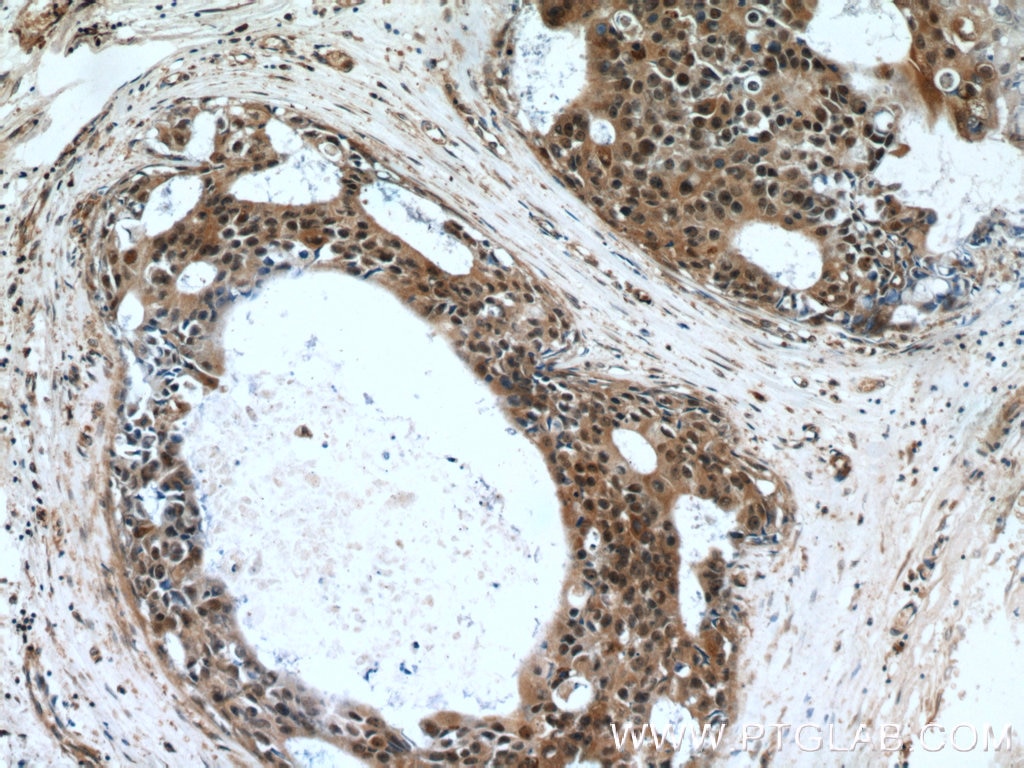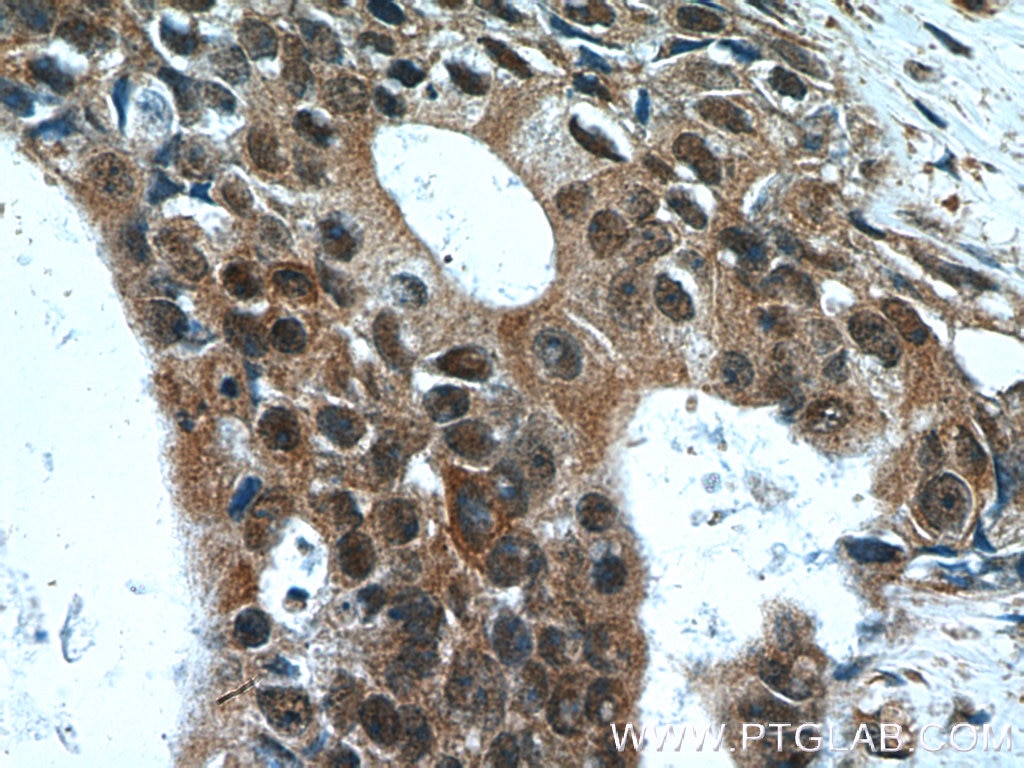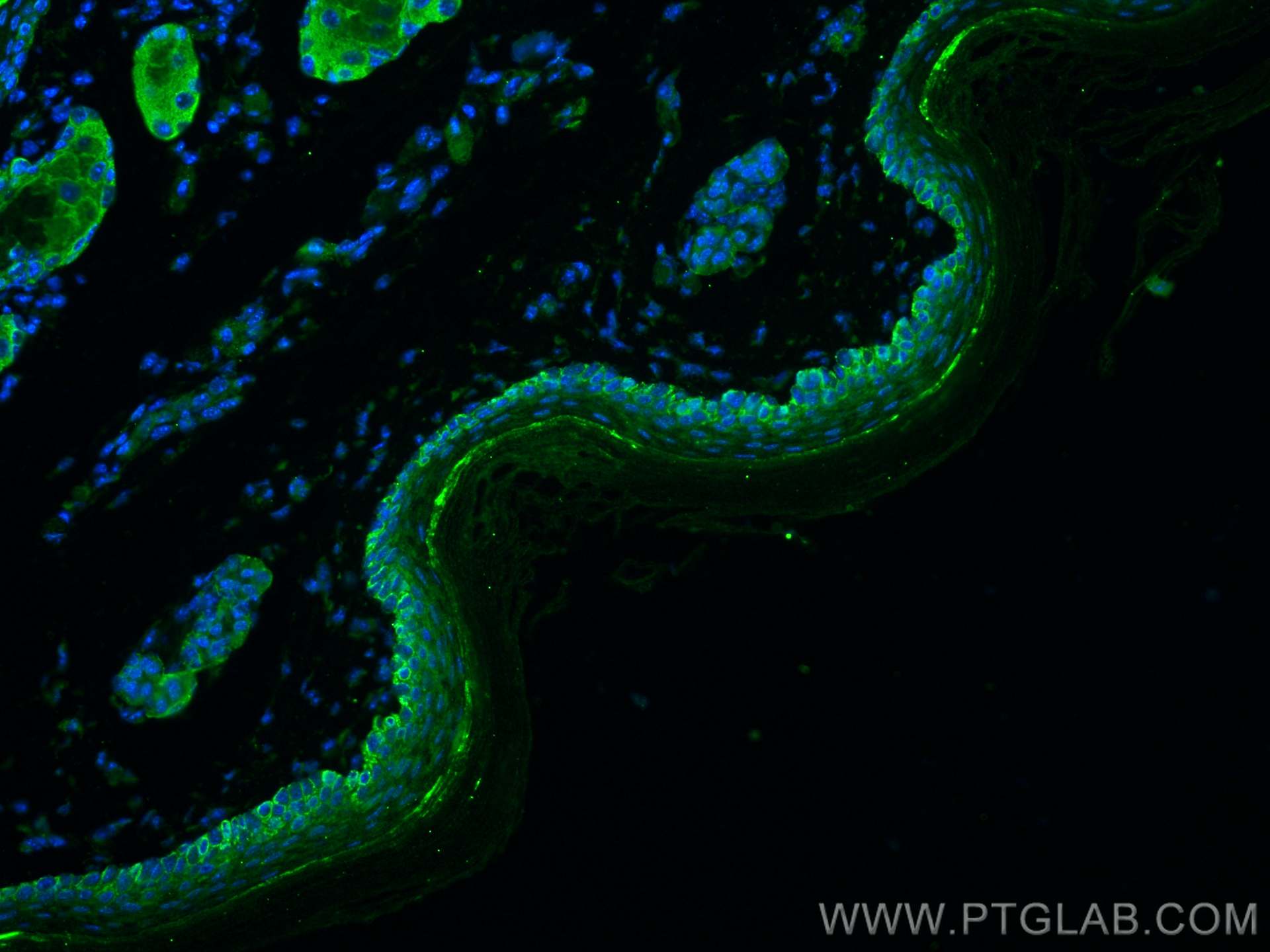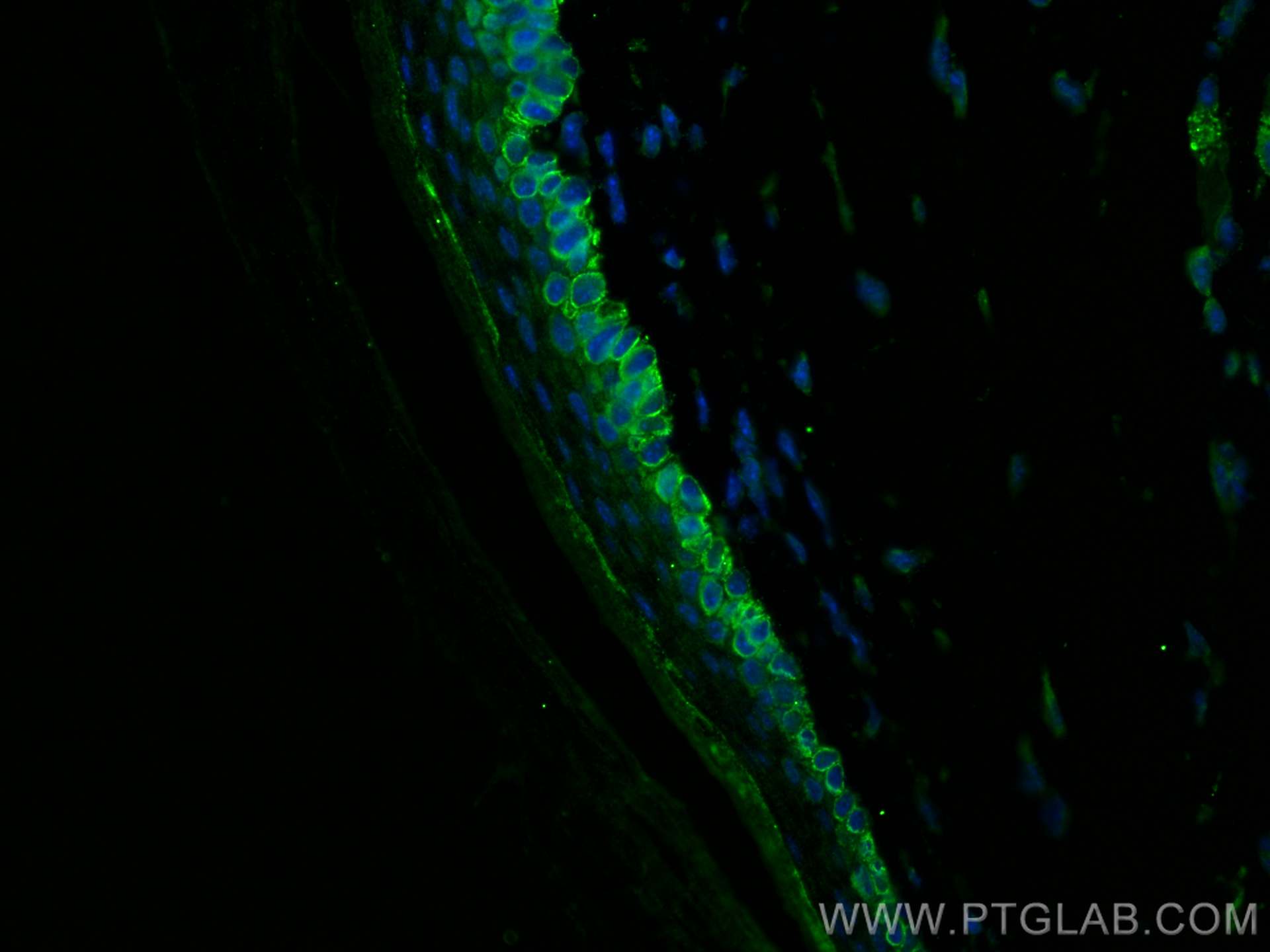Anticorps Polyclonal de lapin anti-Cytokeratin 14
Cytokeratin 14 Polyclonal Antibody for WB, IHC, IF-P, IP, ELISA
Hôte / Isotype
Lapin / IgG
Réactivité testée
Humain, rat, souris et plus (2)
Applications
WB, IHC, IF-P, IP, ELISA
Conjugaison
Non conjugué
N° de cat : 22221-1-AP
Synonymes
Galerie de données de validation
Applications testées
| Résultats positifs en WB | tissu cutané de souris, tissu cutané de rat |
| Résultats positifs en IP | tissu cutané de souris |
| Résultats positifs en IHC | tissu cutané humain, human bowen disease il est suggéré de démasquer l'antigène avec un tampon de TE buffer pH 9.0; (*) À défaut, 'le démasquage de l'antigène peut être 'effectué avec un tampon citrate pH 6,0. |
| Résultats positifs en IF-P | tissu cutané de souris, |
Dilution recommandée
| Application | Dilution |
|---|---|
| Western Blot (WB) | WB : 1:1000-1:8000 |
| Immunoprécipitation (IP) | IP : 0.5-4.0 ug for 1.0-3.0 mg of total protein lysate |
| Immunohistochimie (IHC) | IHC : 1:50-1:500 |
| Immunofluorescence (IF)-P | IF-P : 1:50-1:500 |
| It is recommended that this reagent should be titrated in each testing system to obtain optimal results. | |
| Sample-dependent, check data in validation data gallery | |
Applications publiées
| WB | See 2 publications below |
| IF | See 1 publications below |
Informations sur le produit
22221-1-AP cible Cytokeratin 14 dans les applications de WB, IHC, IF-P, IP, ELISA et montre une réactivité avec des échantillons Humain, rat, souris
| Réactivité | Humain, rat, souris |
| Réactivité citée | Humain, singe, souris, Hamster |
| Hôte / Isotype | Lapin / IgG |
| Clonalité | Polyclonal |
| Type | Anticorps |
| Immunogène | Cytokeratin 14 Protéine recombinante Ag17559 |
| Nom complet | keratin 14 |
| Masse moléculaire calculée | 472 aa, 52 kDa |
| Poids moléculaire observé | 52 kDa |
| Numéro d’acquisition GenBank | BC002690 |
| Symbole du gène | Cytokeratin 14 |
| Identification du gène (NCBI) | 3861 |
| Conjugaison | Non conjugué |
| Forme | Liquide |
| Méthode de purification | Purification par affinité contre l'antigène |
| Tampon de stockage | PBS with 0.02% sodium azide and 50% glycerol |
| Conditions de stockage | Stocker à -20°C. Stable pendant un an après l'expédition. L'aliquotage n'est pas nécessaire pour le stockage à -20oC Les 20ul contiennent 0,1% de BSA. |
Informations générales
Keratins are a large family of proteins that form the intermediate filament cytoskeleton of epithelial cells, which are classified into two major sequence types. Type I keratins are a group of acidic intermediate filament proteins, including K9-K23, and the hair keratins Ha1-Ha8. Type II keratins are the basic or neutral courterparts to the acidic type I keratins, including K1-K8, and the hair keratins, Hb1-Hb6. Keratin 14 is a type I cytokeratin. It is usually found as a heterotetramer with keratin 5. Keratins K14 and K5 have long been considered to be biochemical markers of the stratified squamous epithelia, including epidermis. This antibody is specifically against KRT14.
Protocole
| Product Specific Protocols | |
|---|---|
| WB protocol for Cytokeratin 14 antibody 22221-1-AP | Download protocol |
| IHC protocol for Cytokeratin 14 antibody 22221-1-AP | Download protocol |
| IF protocol for Cytokeratin 14 antibody 22221-1-AP | Download protocol |
| IP protocol for Cytokeratin 14 antibody 22221-1-AP | Download protocol |
| Standard Protocols | |
|---|---|
| Click here to view our Standard Protocols |
Publications
| Species | Application | Title |
|---|---|---|
Free Radic Biol Med S100A8 induces Cyclophosphamide-Induced Alopecia via NCF2/NOX2-Mediated Ferroptosis | ||
Cancer Gene Ther Evaluation of apoptogenic adenovirus type 5 oncolytic vectors in a Syrian hamster head and neck cancer model. | ||
Invest Ophthalmol Vis Sci Single-Cell Transcriptomic Analysis Reveals Dynamic Cellular Processes in Corneal Epithelium During Wound Healing in Cynomolgus Monkeys |
